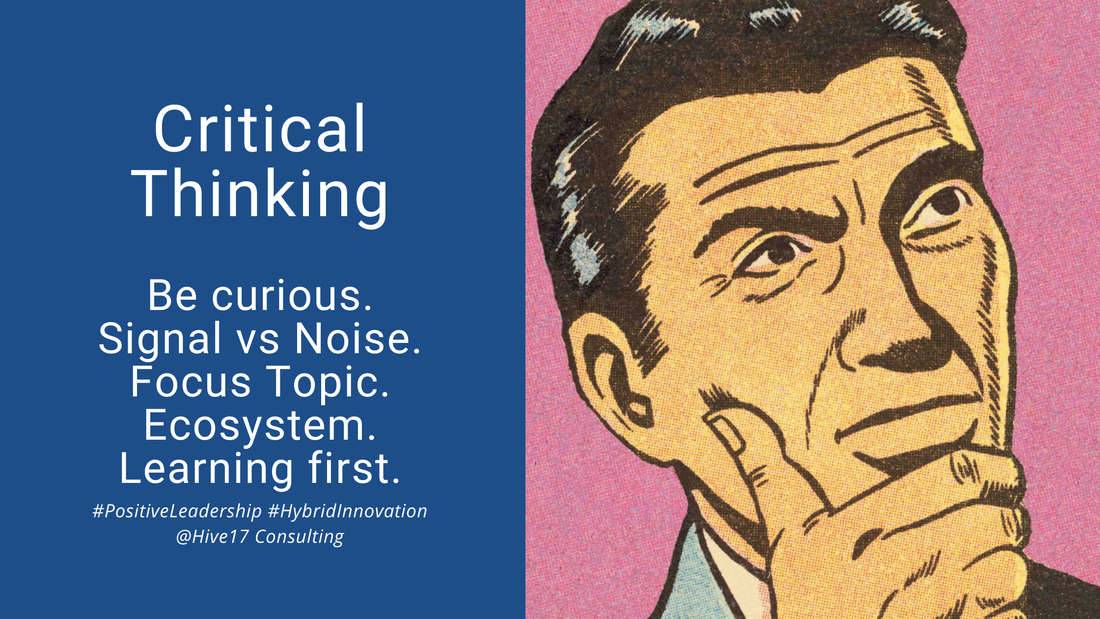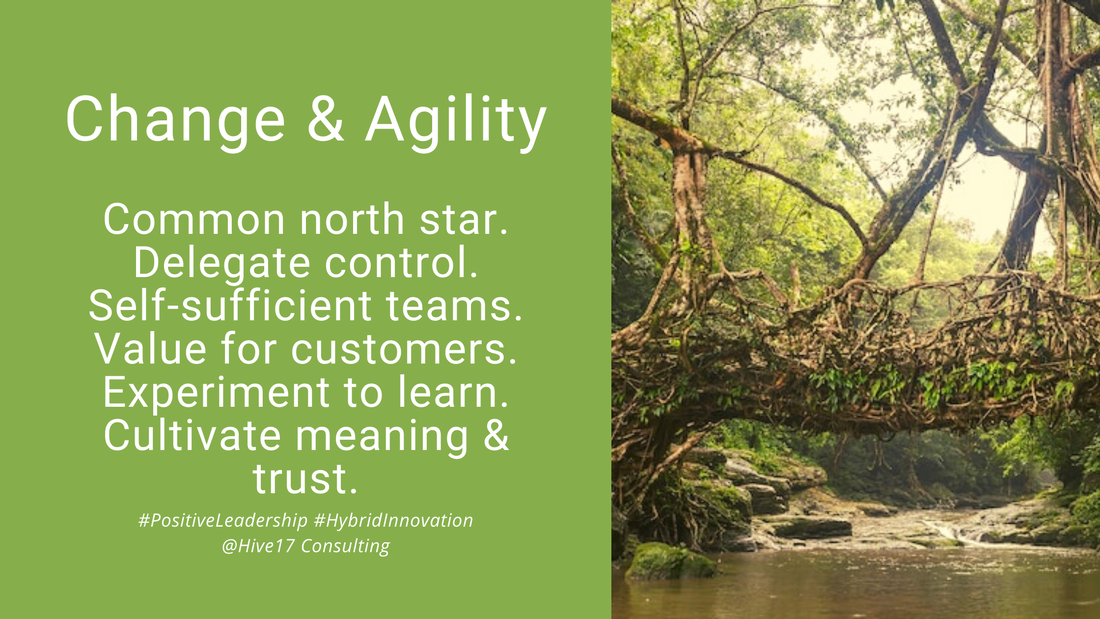|
During my career I conducted many workshops to develop capabilities. And, I also participated in excellent training workshops. Of extremely high quality. And all of them had one thing in common: the change that occurs to our own daily work after the workshops is minimal.
Since a few years, I also had the honour to coach - guiding people to discover themselves and to apply new routines to their work lives. This is the change we want to see in people. Though, coaching is highly intensive and simply not scalable. Last year, I started to work with a few teams here in Singapore to develop solutions that are closer to what their customers want. We started with design thinking training sessions which - no surprise - resulted in no change in their daily work. Then we started to play around with different interventions - as a team, as individuals. Slowly we can observe that new habits are forming and the mindsets are shifting. Training versus Coaching? With this short article, I want to suggest to take a hybrid approach and combine both practices. The aim is to develop new leadership capabilities and cultivate new routines that enable teams and individuals to create lasting success. We can join the benefits of both and add other elements to it. Here is what I suggest:
How do you see that we can combine different practices? What are your experiences with this hybrid approach?
0 Comments
The uncertain times we are living in made one thing clear: we need to innovate! In order to stay successful in our businesses we need to find new ways to create value to our customers, our operations face new challenges we need to address, and our employees require environments that keep them healthy, nimble and engaged. Small improvements will not suffice - in many areas we need to go back to the drawing board.
How can I, as a leader, deal with this accelerated necessity for change? How am I able to control innovation across all corners of our organisation? Let me pose another question: why do I need to control innovation from the centre? Successful, lasting solution might be better identified and implemented at the front - they will be achieved faster and create more value. Then the question is: how can I enable and facilitate innovation at the front? Many people talk about innovation and how to achieve this. Though, there is one trait that is often overlooked and I see it as a essential foundation for innovation and a successful business: Critical Thinking - the objective analysis and evaluation of an issue in order to form a judgement. This will allow the organisation to identify where we can create value, to deeper understand the challenges, and to make better decision to explore the future. Bruce Eckfeldt, in this Inc article Want to Improve Your Leadership Skills? Focus on Critical Thinking, introduces five levers to drive critical thinking. In my words:
These five elements give us leaders ideas on the mindsets and skills we want to develop in our people. Based on critical thinking, we will be able to delegate control to make decision, to experiment, to find solutions. Are you courageous enough? Image credit: Getty Images Yesterday we had a day off; and as so often I was heading into the forest. And every time I am amazed on the impact the dense green has on my mind and body. After an hour surrounded by trees, birds and monkeys, my body and my mind feels refreshed and energised.
This week, I came across this article - The fight for quiet in a world full of noise pollution - introducing a group of people on a quest to raise the awareness of noise pollution and certifying quiet parks. When is the last time you have been in a place that is void of human noise? The group is mentioning a series of positive impacts when enjoying time in quiet places: mental power, overall health, creativity, stress relief - to name a few. It is weekend - let's go out and listen to the sound of nature! Photo credit: Shawn Parkin, Wired UK Here is a conviction of mine, I have been sharing before. In an environment that is complex and continuously changing (who is denying now that we are in this kind of world?), we need to understand how we can create value and we need to act fast.
Who knows best how we can create value? The people at the front. The sales people that talk to the customers, the people that are running through the process steps, the people that are delivering the packages to the doorstep. How can we act faster? If we allow the people at the front make the decision that will make their work smoother, easier and then creating more value. As a logic consequence, we leader should let go of control and handover decision making power to the people that are best equipped to control their (part of the) boat. And still, I can observe many leaders struggling with this. Struggling to let go. One aspect: what else is my purpose of my role? This is answered very easily: provide direction, remove bottlenecks, allocate resources, and create a work environment that is motivating. This is already a lot of work when done properly. So, let's free up some time and give the controls to others. How to let go? Are there any easy steps? Last week I was introduced to some of the backgrounds of Theory U - a concept that gives new insights how we can tap into collective capacities. When looking at the left side of the U, there are some clear steps that lead to letting go. Here they are in my own words: Minimise judgement - judging actions as good or bad prevents us from seeing behind the actions and blocks the understanding of the Why people have done a certain activity. When we open our minds, we start to be curious and can see with fresh eyes. Bring ourselves on the same level - if we think we are better than others, this will block the learning process (the same if you think you are worse than others). Stop critique and cynicism and come down from our high horses. Then we will be able to open our hearts and sense the environment around us. Let us guide from others - as long as we still want to steer the ship by ourselves, we will not discover the potential in our peers. Let go of our fears and open our will, and totally new possibilities will be unleashed. What holds you back from letting go? How did you feel when you actually achieved it? We all heard about it - Agile Transformation! I have seen the term used in two situations. Either the organisation wants to introduce Agile Development and that is indeed a major transformation. Or, the organisation wants to drive change (innovation, market expansion, increased competition, etc.) and they decided to become more agile. I suggest to converge to the latter.
So, how can a change management approach bring more agility in leadership, to the teams and to the success of your operations? Here are a few pointers from my practice, inspired as well from two articles linked below. Mentioned many times, the North Star is key to make people excited about the change to come, gives them meaning. And it is also the anchor and the imagination for what we want to achieve. Without this, agility turns into chaos. The people in the frontlines have access to the best knowledge and information on how to bring success with change. Delegating control to the people that can run the show, makes the teams nimble and they can act faster. People on the top might - often involuntary - act as bottlenecks. Facilitating lasting success means, these teams need to be self-sufficient and self-organising. The team needs the right environment and the right skills to get there. And, for sure, they need to be aware that they are acting in a larger ecosystem, all striving for the same north star. Achieving the north start mostly includes creating value for our customers. The teams should create structured routines that allow them to discover a clear view on how this value looks like and what the customers appreciate most. At the core of each team is learning - this bring the individual, the team and the entire ecosystem forward. Experimentation enables continuous learning; and the leaders facilitate and contribute in this journey. Planning for the next 12 to 18 months often leads to situation where a team is stuck in their course and unable to take the necessary changes to adapt to a new environment. Therefore, I suggest to create an imagination of the future state and of the path to get there. This provides direction and keeps the flexibility. Based on this, the team can plan what they want to achieve and learn now - typically in a horizon of three months. Lastely, the agile teams work best in an environment that cultivates meaning and trust; as leaders we can create a platform for success and this requires a place where we can have open conversations, feel safe and find our work fulfilling. In my eyes, agility is not about processes and organisational structures. Change management practices have shown how we can engage with a new leadership style that is universal on all levels of the organisation; a style that is inspiring and enabling people to be successful. This is how we can stay adaptive, nimble and jump ahead to new opportunities. Where do you see the the link between change management and agility? How do you put these into practice? Sources An Agile Approach to Change Management, Harvard Business Review Unleashing the power of small, independent teams, McKinsey Quarterly |
Subscribe
Receive our monthly themed summaries of our thoughts: click! TimTim is a change practitioner in the area of innovation and excellence. He is working with teams to accelerate innovation, collaboration and agility. Categories
All
Archives
July 2024
|






 RSS Feed
RSS Feed